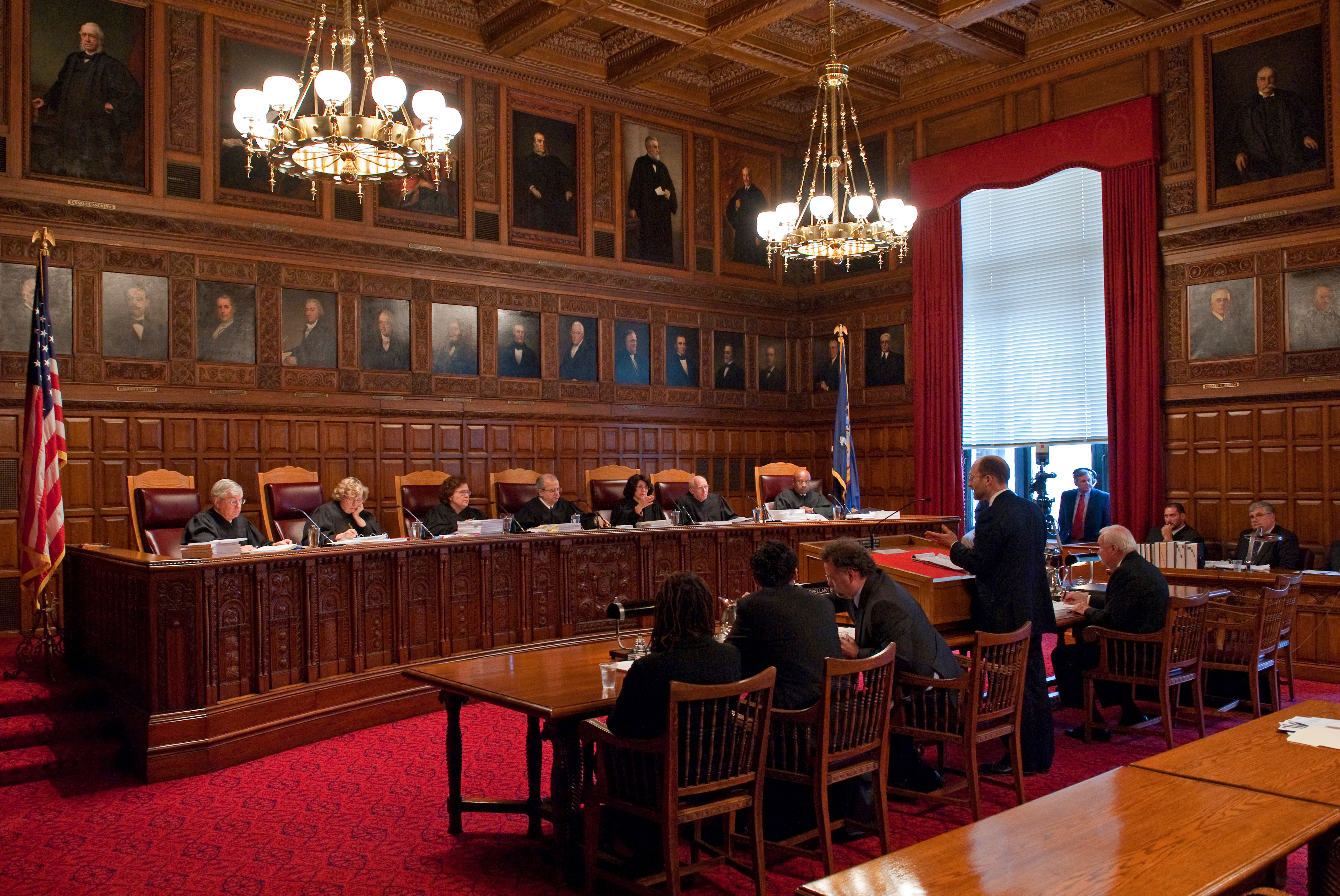|
Golden V. Planning Board Of Ramapo
''Golden v. Planning Board of Ramapo'' was a landmark 1971 land-use planning case in New York that established growth management planning as a valid exercise of the police power in the United States. Background The Town of Ramapo, New York passed a zoning ordinance prohibiting development of a subdivision plat unless the property owners had a special permit, one of the early Adequate Public Facilities Ordinances. Permits were granted based on a point system based on available municipal facilities in the area of proposed development, with the intent of phasing development over the lifetime of the town's 18-year capital plan. Developers could meet the requirements to be granted a special permit by constructing their own infrastructure. Property owner Ruth Golden and other plaintiffs, who either were denied approval of their subdivision plats because they had not applied for special permits or had never applied for platting because they were aware that they would not receive a spec ... [...More Info...] [...Related Items...] OR: [Wikipedia] [Google] [Baidu] |
New York Court Of Appeals
The New York Court of Appeals is the highest court in the Unified Court System of the State of New York. The Court of Appeals consists of seven judges: the Chief Judge and six Associate Judges who are appointed by the Governor and confirmed by the State Senate to 14-year terms. The Chief Judge of the Court of Appeals also heads administration of the state's court system, and thus is also known as the Chief Judge of the State of New York. Its 1842 Neoclassical courthouse is located in New York's capital, Albany. Nomenclature In the Federal court system, and most U.S. states, the court of last resort is known as the "Supreme Court". New York, however, calls its trial and intermediate appellate courts the "Supreme Court", and the court of last resort the Court of Appeals. This sometimes leads to confusion regarding the roles of the respective courts. Further adding to the misunderstanding is New York's terminology for jurists on its top two courts. Those who sit on its supreme ... [...More Info...] [...Related Items...] OR: [Wikipedia] [Google] [Baidu] |
Regulatory Takings In The United States
In United States constitutional law, a regulatory taking occurs when governmental regulations limit the use of private property to such a degree that the landowner is effectively deprived of all economically reasonable use or value of their property. Under the Fifth Amendment to the United States Constitution governments are required to pay just compensation for such takings. The amendment is incorporated to the states via the Due Process Clause of the Fourteenth Amendment. Regulatory takings jurisprudence has its roots in Justice Oliver Wendell Holmes' opinion in ''Pennsylvania Coal v. Mahon'' (1922) which stated that: "The general rule, at least, is that, if regulation goes too far, it will be recognized as a taking for which compensation must be paid." Modern jurisprudence to determine whether a regulatory taking has occurred centers around the ad hoc factor-based test that the Supreme Court of the United States laid out in ''Penn Central Transp. Co. v. New York City'' ( ... [...More Info...] [...Related Items...] OR: [Wikipedia] [Google] [Baidu] |
1971 In New York (state)
* The year 1971 had three partial solar eclipses (Solar eclipse of February 25, 1971, February 25, Solar eclipse of July 22, 1971, July 22 and Solar eclipse of August 20, 1971, August 20) and two total lunar eclipses (February 1971 lunar eclipse, February 10, and August 1971 lunar eclipse, August 6). The world population increased by 2.1% this year, the highest increase in history. Events January * January 2 – 66 people are killed and over 200 injured 1971 Ibrox disaster, during a crush in Glasgow, Scotland. * January 5 – The first ever One Day International cricket match is played between Australia and England at the Melbourne Cricket Ground. * January 8 – Tupamaros kidnap Geoffrey Jackson, British ambassador to Uruguay, in Montevideo, keeping him captive until September. * January 9 – Uruguayan president Jorge Pacheco Areco demands emergency powers for 90 days due to kidnappings, and receives them the next day. * January 12 – The landmark United ... [...More Info...] [...Related Items...] OR: [Wikipedia] [Google] [Baidu] |
1971 In United States Case Law
* The year 1971 had three partial solar eclipses (February 25, July 22 and August 20) and two total lunar eclipses (February 10, and August 6). The world population increased by 2.1% this year, the highest increase in history. Events January * January 2 – 66 people are killed and over 200 injured during a crush in Glasgow, Scotland. * January 5 – The first ever One Day International cricket match is played between Australia and England at the Melbourne Cricket Ground. * January 8 – Tupamaros kidnap Geoffrey Jackson, British ambassador to Uruguay, in Montevideo, keeping him captive until September. * January 9 – Uruguayan president Jorge Pacheco Areco demands emergency powers for 90 days due to kidnappings, and receives them the next day. * January 12 – The landmark United States television sitcom ''All in the Family'', starring Carroll O'Connor as Archie Bunker, debuts on CBS. * January 14 – Seventy Brazilian political prisoners are rele ... [...More Info...] [...Related Items...] OR: [Wikipedia] [Google] [Baidu] |
Public Infrastructure
Public infrastructure is infrastructure owned or available for use by the public (represented by the government). It is distinguishable from generic or private infrastructure in terms of policy, financing, purpose, etc. Public infrastructure is a general term often qualified specifically as: * Transport infrastructure – vehicles, road, rail, cable and financing of transport ** Aviation infrastructure – air traffic control technology in aviation ** Rail transport – trackage, signals, electrification of rails ** Road transport – roads, bridges, tunnels * Critical infrastructure – assets required to sustain human life * Energy infrastructure – transmission and storage of fossil fuels and renewable sources * Hazardous waste – characteristics, disposal, handling of hazardous waste * Information and communication infrastructure – systems of information storage and distribution * Public capital – government-owned assets * Public works – municipal infrastructure, mai ... [...More Info...] [...Related Items...] OR: [Wikipedia] [Google] [Baidu] |
Impact Fee
An impact fee is a fee that is imposed by a local government within the United States on a new or proposed development project to pay for all or a portion of the costs of providing public services to the new development.Juergensmeyer, Julian C., and Thomas E. Roberts. Land Use Planning and Development Regulatory Law. St. Paul, MN: West Group, 2003. 351-373. Impact fees are considered to be a charge on new development to help fund and pay for the construction or needed expansion of offsite capital improvements. These fees are usually implemented to help reduce the economic burden on local jurisdictions that are trying to deal with population growth within the area. History Impact fees were first implemented in Hinsdale, Illinois in 1947. To finance a water treatment plant expansion, the Hinsdale Sanitary District president John A. McElwain implemented a "tap-in" fee of $50 per new residential sewer line. The sanitary district was sued by the Illinois Home Building Association, ... [...More Info...] [...Related Items...] OR: [Wikipedia] [Google] [Baidu] |
Construction Industry Association Of Sonoma County V
Construction is a general term meaning the art and science to form objects, systems, or organizations,"Construction" def. 1.a. 1.b. and 1.c. ''Oxford English Dictionary'' Second Edition on CD-ROM (v. 4.0) Oxford University Press 2009 and comes from Latin ''constructio'' (from ''com-'' "together" and ''struere'' "to pile up") and Old French ''construction''. To construct is the verb: the act of building, and the noun is construction: how something is built, the nature of its structure. In its most widely used context, construction covers the processes involved in delivering buildings, infrastructure, industrial facilities and associated activities through to the end of their life. It typically starts with planning, financing, and design, and continues until the asset is built and ready for use; construction also covers repairs and maintenance work, any works to expand, extend and improve the asset, and its eventual demolition, dismantling or decommissioning. The co ... [...More Info...] [...Related Items...] OR: [Wikipedia] [Google] [Baidu] |



